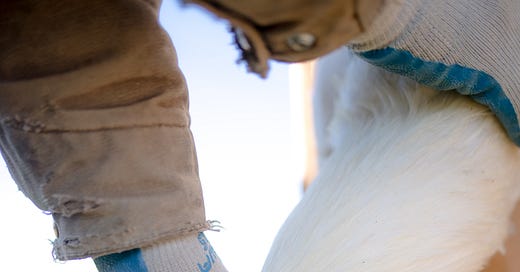Unless you’re buying female chicks from a hatchery, it’s inevitable that a backyard flock of chickens will end up with some roosters. When a hen goes broody and sits on fertilized chicken eggs for 21 days, she will hatch both male and female chicks from the bunch. The result of broody hens is roosters: it’s just part of it. I’ve read in parts of Italy they will actually castrate young roosters and raise them up on cooked grains to produce a very mild (almost milky) chicken for meat.
Personally? I’m not that interested in castrating roosters. So instead, on our farm, we let them eat, free range, grow up to be big and fat, and butcher them for rooster meat.
(If you’re curious, rooster meat is - yes - just like standard chicken. Albright a bit more developed and a bit less fatty. But more on that soon.)
We also raise ducks here - for meat and eggs - and so when we had a few hours to spare last week, we devoted our efforts to butchering our fattened roosters and drakes (male ducks). Unfortunately for males on the farm, you really only need one to get the job done. The rest of the males are simply an extra mouth to feed - which I am happy to do, so long as eventually that extra mouth we’ve fed translates to food for our supper table.
We had 10 roosters and drakes butchered in less than 2 hours. On the whole, it’s a very small amount of effort for a large harvest of meat. Let me walk you through it a bit.
Keep reading with a 7-day free trial
Subscribe to Cultivating The Beautiful Life to keep reading this post and get 7 days of free access to the full post archives.



